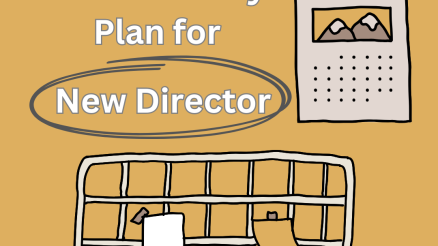Change management process includes steps which lead to change from very beginning to final delivery of the intended outcome.
Every organization has its own understanding of the change management process but common seven steps involved in the process of change management are given below:
7 Steps Process of Change Management
1. Need Identification
Every new journey starts with some basic questions like where do you want to go and why do you want to go. The leaders of change management usually think on these lines and find answers of what do you want to change and why do you want to change. This thinking will help in identifying the need to change.
This is not an easy step at all. It involves a lot of brainstorming and analysis of the business model, new opportunities, cost and human resource etc.
Analysis will also identify whether we need change in process, or marketing strategy, or change is required to adopt new technology, acquire new ventures or shift in whole business model etc. After need identification, leadership has more clarity and define what exactly change look like.
2. Developing strategy
The next step is to develop a comprehensive strategy of change management. Strategies are, usually, in written form and its purpose is to document the whole concept of change in length.
A well written and documented strategy is used to communicate change from top to bottom. It clearly outlines the objective and scope of change; builds a strong case for change and how it will impact the future of the organization.
It should be a comprehensive document which includes how you implement change and what will be big or small steps involves in every step, role and responsibilities, what will be timeline and estimate cost of the change management.
Although it is a written document but should remain a flexible so that any feedback or changes can be adjusted into it during the implementation phase.
3. Preparing team
Only a competent change team can deliver the intended change. Preparing a team to implement change depends on what is the scope and type of change; and what is existing skills level of current human resource. Assigning new role and responsibilities is always important to get the things done.
In change management team, there are leaders who creates vision for change and lay the strong foundation on which the all the components of change are constructed.
On the next tier, there are change managers who implement the tasks and manage other team members.
4. Implementation of plan
A good implementation plan of change management is vital to achieve the intended change. The implementation plan includes clearly defined roles and responsibilities, list of milestone and deadlines, monitoring process and budget. It details on who is doing what and when.
Like strategy document, it is also a living document which might get changed and adjusted to regular feedback and changing situations.
Implementation plan also guides tracking progress, assess and evaluate the journey towards achieving change.
5. Managing resistance
Resistance to change is unavoidable. It is all about human nature to resist change. Resistance, usually, occurs due to fear and uncertainty of the unknown.
Change involves a lot of risk. Therefore, managing resistance is vital for change to successfully happen.
Fear and anxiety of employees can not be overcome in one day. So, resistance can not be washed away with just one magic stick.
That is why it is always better to manage resistance instead of eliminating it.
The more people who wholeheartedly adopt to change, the better. Even those who are reluctant about change will start following it and giving it a chance if leadership and managers are convinced.
6. Tracking progress
For every change management process to be successful, a structure should be set up to track the progress towards the final goal. There are many methods to track the progress.
One simple method is to set milestones and small goals under the big goal. If all milestones are being achieved, then it is likely that final goal of change will also be achieved in the given time.
Tracking progress will also help in identifying problems i.e what is not working and why. Another use of tracking progress is to assess the performance of the employees.
7. Taking corrective actions
The next step of change management process is to take corrective actions on problems and gaps identified in progress tracking phase.
If gaps are identified and employees are not adopting to change and not convinced about the new process, new methods, new technologies then leadership must take immediate corrective actions to put the entire change on right direction.
It is difficult and even painful to take corrective actions because it can further increase the fears and anxiety of employees. So, leadership need to be very careful and use best method to enforce corrective actions.
Take Home Points
- There is no hard and fast about what is a change management process but generally it involves seven steps.
- To begin with, change is defined that why it is needed and what are factors. This leads to the second logically step which is how change is implemented; so a strategy needs to be developed.
- Taking a team on board is the third step and preparing and implementing change management plan is the fourth step of process.
- Managing resistance is the fifth step and knowing that whether implementation plan is on track is the sixth step.
- Last but not least is taking timely actions to put the plan on track.



